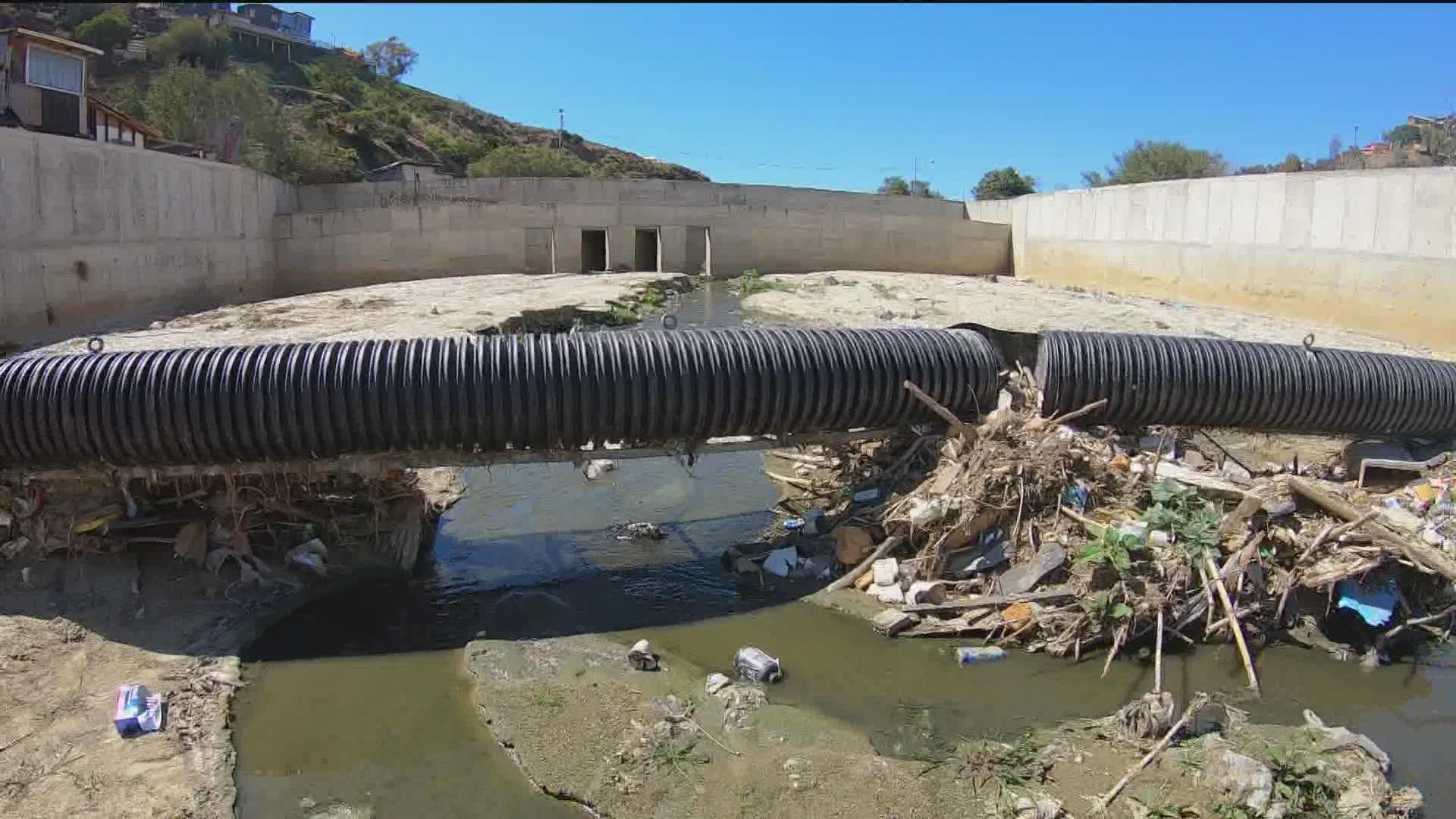TIJUANA, Baja California — We wanted to come to the source of the pollution that affects people on both sides of the border.
A channel filled with sewage and trash is about a third of a mile south of the border from San Diego and it goes through the community of Las Flores (also known as Los Laureles) in Tijuana, Mexico.
Fay Crevoshay, the Policy and Communications Director with WILDCOAST guided us as we carefully stepped through the sludge in that channel, “watch where you're stepping.”
CBS 8 was able to get a firsthand look at the cross-border contamination.
“There’s no pipes going anywhere, there’s no pipes! Where else would it go? Is there a treatment plant near here? No,” she says.
We haven’t seen significant rain in awhile so the water levels are very low but we can still see the sewage. And we can certainly smell it.
In fact, as we were about to interview Juan Benitez, a bit of wind came and we felt a light spray on our faces. Juan lives near this neighborhood and despite the waste at our feet and in our faces, he tells us he’s seen a lot of improvement since WILDCOAST installed a boom.
Because at least there are far fewer plastics and large pieces of trash now moving through the waters.
The WILDCOAST boom moves up and down as the water levels rise and drop and it has a grate underneath to keep the bigger objects from continuing downstream.
Juan works for WILDCOAST, picking up the trash that gets captured in the boom and in the channel. His team encourages the people who live here to do the same, “it’s very important the system we catch a lot 1000 kilos.”
They fill up what they call “super sacks” - six of them in one day, full of recyclable plastic.
It all eventually gets recycled and earns them some money.
Much-needed money in an impoverished community, where Fay has gotten to know the people.
She says a lot of them live off of about $3 a day. And for most, they live here because of what's referred to as “homesteading.” They find land and build their own homes with any materials they can get - cardboard boxes, planks, concrete. Old tires are also often used.
Since the homes are built on the hillside and not by large developers like most places in the U.S., there’s not much of a plan for sewage besides having a few pipes send it down to the channel. The channel runs in between homes and schools.
While the smell of waste can get overwhelming, Fay says most people here just get used to it.
Solving the sewage issue is a big and complicated task, so WILDCOAST crews are at least trying to stop some of the trash from continuing into the Tijuana estuary then the ocean.
“We can support more trash booms instead of complaining,” Fay says. She hopes to install several booms across the many channels in Tijuana, “it’s not rocket science there is a solution for all of this and we just need the will to do it.”
In fact, some of the tires they have collected have been installed in Las Flores to serve as stairs and swing-sets for a playground, as WILDCOAST’s way of giving back and helping out the kids who live there.
The kids who play here get to experience fun moments playing soccer in what’s dubbed the “futbolito” or small soccer field, despite their polluted surroundings
But this is one small part of a larger international problem, “these are two countries with one ecosystem,” Fay says.
Since the ocean has no borders what happens on these streets and in these waters is bound to impact San Diegans. We see it very often when places like Imperial Beach get shut down due to pollutants and now you know where some of that is coming from.
WATCH RELATED: State and local leaders request $100 million to address border sewage crisis

